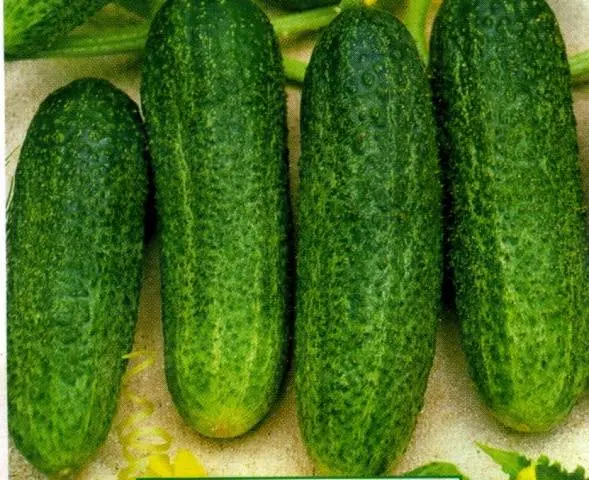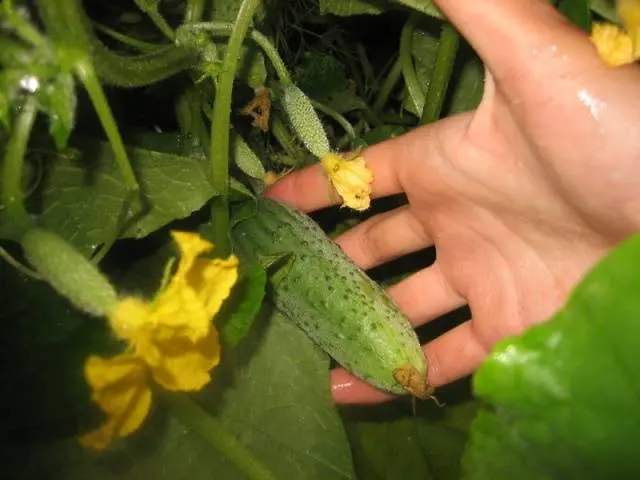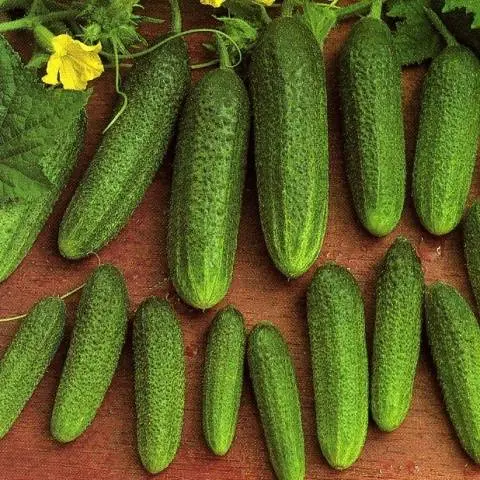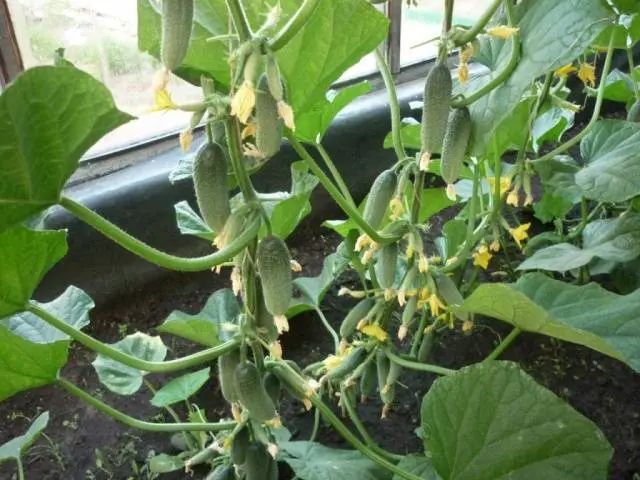Contents
We cannot imagine our summer diet without cucumbers, and those who have at least a small piece of a vegetable garden plant a few bushes. In large gardens, entire plantations are occupied by cucumbers. Today we are offered hundreds of varieties, it is difficult to figure out their diversity without outside help. We suggest that you plant the Libelle cucumber.

Libelle is a time-tested hybrid of German selection. And although it was entered into the state register back in 1976, the variety still enjoys well-deserved popularity and bears excellent fruit in the North-Western and Central regions.
Variety description
In order to understand the advantages of Libelle cucumbers, we will give a description of the variety. This is a mid-season variety, from the appearance of the first shoots to the collection of fruits, it usually takes about 50 days. The hybrid Libelle is suitable for cultivation in open ground, under removable film shelters and for greenhouses. If you have a small closed greenhouse, it is better not to plant these cucumbers – they are pollinated by bees and closed ground conditions usually do not allow amateur gardeners to get a good harvest. Of course, if you have bees, or there is an apiary nearby, feel free to plant the Libelle variety and just ventilate the greenhouse more often in sunny weather.

The shoots of Libelle cucumbers are long, they can be put on a support. The marketable cucumber itself reaches a size of 12-14 cm, weighs 100-150 g, the yield is from 5 to 10 kg per square. Zelentsy are strewn with small tubercles with whitish thorns. The Libelle variety reaches its highest yield by the end of summer, which is very convenient – the mass ripening of fruits allows them to be processed quickly.
The undoubted advantages of Libelle f1 cucumbers are their versatility, they are:
- Suitable for fresh consumption;
- Suitable for winter preparations;
- They can be collected both in the phase of gherkins and greens.

The disadvantages of the Libelle variety include:
- Rapid outgrowth;
- White spots spoiling the appearance;
- The presence of bitterness.
So bitterness is more of a positive characteristic. Light bitterness gives the taste of cucumbers piquancy, and the benefits of their use are undeniable.
Cucumbers of the Libelle variety are resistant to spotting and downy mildew, have excellent commercial qualities and are tasty.
Care for cucumbers
Caring for the Libelle hybrid is not much different from caring for cucumbers of other varieties. They all love:
- Well-lit landing site;
- Fertile soil with a neutral reaction;
- Fertilizers with fresh manure;
- Abundant watering;
- Warm moist air.
Dislike any cucumbers:
- transfers;
- acidic soils;
- Dense soils;
- Watering with cold water;
- A sharp change in temperature;
- Skvoznyakov;
- Cold night temperature.
Seed preparation
Libelle cucumber hybrids have a predominantly female type of flowers and they do not need pre-heating of seeds. If they are covered with a colored shell, they are planted in the ground without any additional procedures. If the shell is missing, immediately before sowing, soak the seeds in hot water at a temperature of 53 degrees for 15-20 minutes. This will kill the pathogens of anthracnose and bacteriosis.
It is good to germinate the seeds of the Libelle hybrid before planting by soaking them for several days in Epin’s solution (it increases germination, increases the resistance of cucumbers to diseases). Coated seeds do not germinate.
Rules of landing
In colder climates, they are best grown horizontally in small greenhouses that can hold warm air at night. During the day they are opened, giving access to the sun, fresh air and bees.
For Libelle cucumbers, we choose a sunny, wind-protected place. If you have acidic soil, add lime or dolmite flour before planting at the rate of 1 liter of can per 1 sq. m. In any case, add a few handfuls of well-rotted compost to each hole.

For insurance, three seeds of Libelle cucumbers are planted in each hole, placing them in the center of the hole, at a distance of several centimeters from each other. Planting depth – about 1,5-2 cm. There should be 3-4 plants per square meter.
Water the planting well with warm water and cover with a film or lutrastil. Shelter is removed only for watering and ventilation. When the night temperature is consistently above 12 degrees, the shelter can be removed completely.

Watering and feeding
Libelle cucumbers are very fond of moisture, but this does not mean that the soil needs to be turned into a swamp.
Water only with warm water and under the root. In cool weather, watering should be reduced – this will protect plantings from downy mildew and rot.
Libelle cucumbers are potassium lovers, but they take out few useful substances from the soil. If, when planting seeds, you applied humus or other fertilizer for digging, for the first time, give top dressing no earlier than two weeks after germination.
Mineral fertilizers alternate with organic ones, feeding Libelle cucumbers once a week after watering. Instead of mineral fertilizer, you can take ash, which is scattered on wet soil at the rate of 2 salt spoons per bush or special fertilizers for pumpkin – they are sold in specialized stores. Fresh cow dung is infused for 2 weeks, diluted with water in a ratio of 1:10.
It will be convenient for residents of regions with a warm climate to grow the Libelle variety on a trellis, tying them up as shown in the video.

Consumers give good reviews about the appearance and taste of Libelle cucumbers. Look at the photo:











